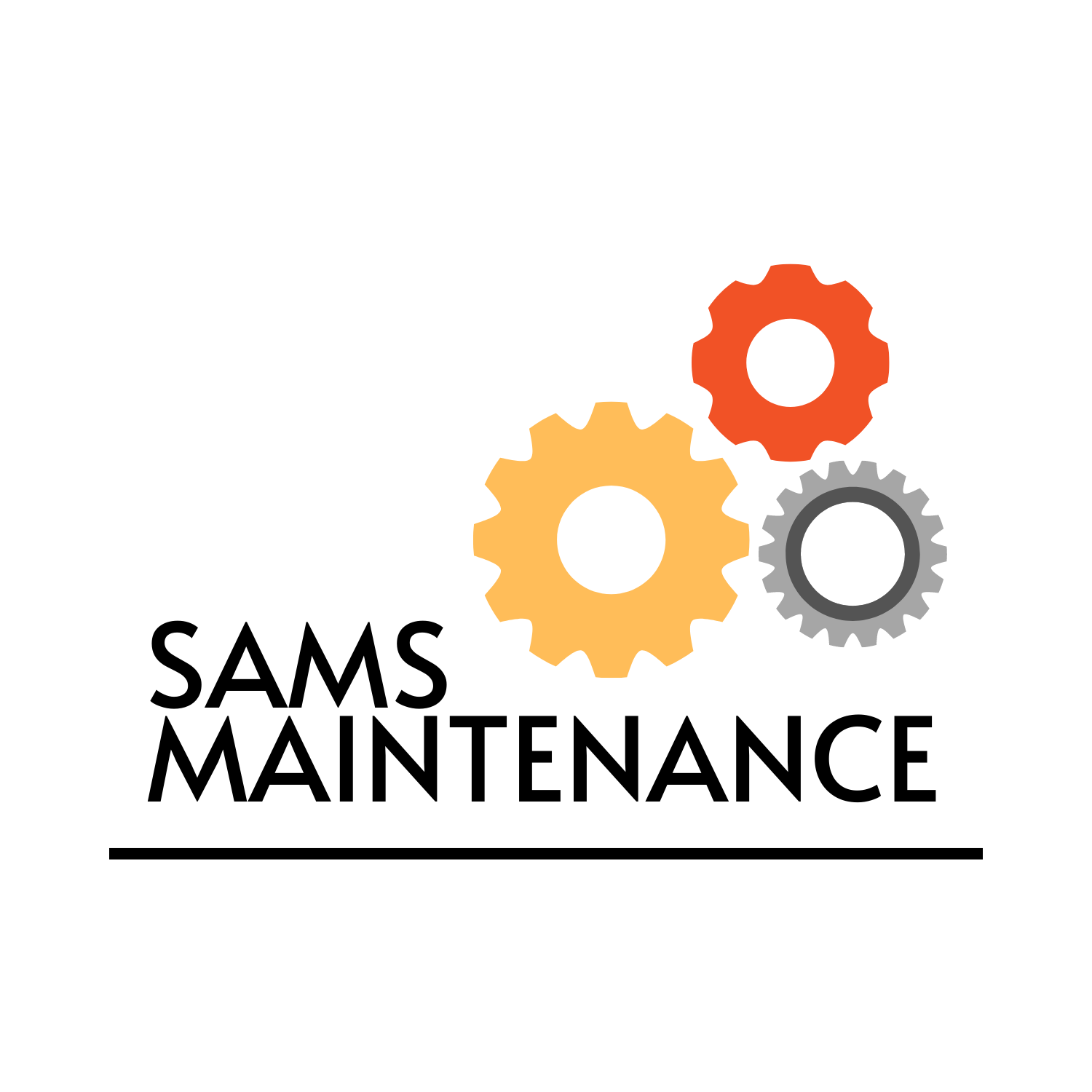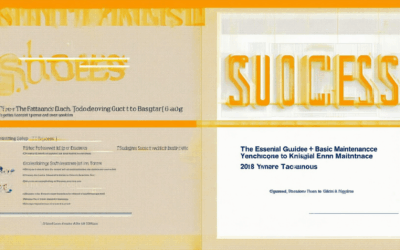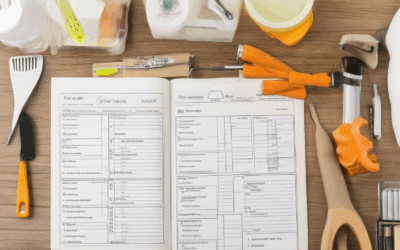Homeownership is often described as one of life’s most rewarding experiences, offering a sense of stability and pride. However, it also comes with its own set of challenges, particularly when it comes to maintaining a home in top condition. While many homeowners may underestimate the importance of routine upkeep, failing to address minor issues can lead to major repair bills down the line. In this comprehensive guide, we will explore the essential basics of home upkeep, providing actionable insights and practical advice to help you maintain your property in peak shape. From creating a personalized maintenance schedule to understanding the costs involved, this article serves as your go-to resource for keeping your home in excellent condition. Whether you’re a seasoned homeowner or new to the responsibilities, this detailed checklist will empower you to take proactive steps toward preserving your investment and ensuring long-term safety and comfort for your family.
Key Takeaways: Essential Home Upkeep Tips
- Regular Cleaning: Maintain a fresh environment by keeping countertops, bathrooms, and floors clean weekly.
- Scheduled Maintenance: Ensure systems like HVAC, plumbing, and appliances are checked regularly to catch issues early.
- Proactive Repairs: Address minor problems promptly to prevent costly repairs and extend your home’s lifespan.
- Efficient Landscaping: Enhance your home’s curb appeal and promote a healthy lawn with regular mowing, fertilizing, and pruning.
- Energy-Efficiency: Reduce utility bills and prolong appliance life by upgrading to energy-efficient models and optimizing thermostat settings.
- Personal Safety: Protect your family by testing smoke detectors, ensuring security systems function, and reviewing emergency plans.
- Budgeting: Stay financially prepared by setting aside funds for maintenance and considering cost-effective solutions.
- Community Engagement: Build stronger neighborhood bonds and improve local aesthetics by participating in clean-up initiatives and sharing resources.

Regular House Maintenance Tips
Keeping your house in great shape requires consistent effort and attention. Here’s a detailed guide to help you stay on top of regular maintenance tasks:
Monthly Maintenance Tasks
- Check HVAC System: Inspect filters, coils, and ductwork for cleanliness and blockages. Schedule professional servicing if needed.
- Examine Pipes and Drains: Look for leaks or cracks. Use a snake or drain cleaner for clogged pipes.
- Test Smoke Detectors and Carbon Monoxide Sensors: Ensure these devices are functioning properly and replace batteries as necessary.
- Inspect Windows and Doors: Check for drafts, damage, or peeling paint. Replace weatherstripping if needed.
- Clean and Service Appliances: Regularly clean ovens, dishwashers, and laundry machines. Descale hard water buildup on fixtures.
- Check Roof and Siding: Look for missing shingles, damaged flashing, or signs of wear. Address issues promptly to prevent further damage.
- Service Lawn Equipment: Clean and oil lawn mowers, trimmers, and other outdoor tools before use each season.
- Review Insurance Policies: Ensure your home insurance coverage is up to date and adequate for any potential risks.
Seasonal Maintenance
- Spring Cleaning: Deep clean bathrooms, kitchens, and storage areas. Remove cobwebs and debris from outdoor spaces.
- Summer Preparation: Check for termite infestations, inspect gutters, and prepare for storm season by securing loose items.
- Fall Maintenance: Rake leaves, clean out chimneys, and store outdoor furniture. Prepare for colder weather by insulating pipes.
- Winter Readiness: Clear snow and ice from walks, check for frozen pipes, and ensure heating systems are operating efficiently.
Additional Tips
- Trim Trees and Shrubs: Keep trees and shrubs pruned to avoid damage to your roof or property during storms.
- Inspect Foundation: Look for cracks or signs of shifting. Consider sealing if necessary.
- Water Outdoor Plants: Adjust watering frequency based on seasonal changes to keep plants healthy.
- Check for Pest Infestations: Inspect for ants, spiders, or rodents and take measures to eliminate them.
By staying proactive with these maintenance tasks, you’ll extend the life of your home and ensure it remains a safe and comfortable place to live. Remember to schedule regular inspections and address issues early to prevent costly repairs later.
What Maintenance Is Required for a House?
A well-maintained house ensures longevity, safety, and comfort. Regular maintenance covers a variety of tasks that prevent issues before they arise. Here’s a comprehensive guide to keeping your house in top shape:
Seasonal Home Maintenance
Maintenance varies by season, so staying organized is key. Below is a breakdown of tasks based on the season:
- Spring: Check for damage to roofing materials, inspect gutters, and clean debris from outdoor systems.
- Summer: Test air conditioning units, inspect chimneys, and clean out rain gutters to prevent blockages.
- Fall: Clear leaves from roofs and gutters, check for signs of wear on siding, and prepare for colder weather.
- Winter: Insulate pipes, clear snow from walkways, and check for drafts around windows and doors.
Year-Round Home Maintenance Tasks
Regular checks and routine maintenance are essential:
- Exterior Maintenance: Paint peeling siding, replace broken shingles, and trim overgrown trees or bushes.
- Interior Maintenance: Vacuum moldings, dust surfaces, and sanitize bathrooms to prevent mildew growth.
- Appliance Care: Clean and service HVAC systems, test smoke detectors, and drain water heaters annually.
- Plumbing Checks: Look for leaks under sinks, around pipes, and behind appliances.
- Electrical Systems: Inspect outlets and switches for damage or tripping hazards.
Additional Tips for Homeowners
To enhance your maintenance routine:
- Monthly Checklists: Create a personalized schedule for tasks like changing air filters, pruning trees, and testing fire alarms.
- Professional Inspections: Hire experts for chimney sweeps, termite inspections, and septic tank evaluations.
- Emergency Preparedness: Keep a kit ready for plumbing, electrical, and HVAC emergencies.
By staying proactive with these maintenance tasks, you’ll extend your home’s lifespan and enjoy a safer, more comfortable living environment. Remember to consult trusted resources like this comprehensive guide for further details.

What is General Home Maintenance?
General home maintenance refers to the routine tasks and activities required to keep a residential property in good condition. These tasks aim to prevent damage, extend the lifespan of belongings, and ensure safety and comfort for residents. Below is a breakdown of essential aspects of home maintenance:
Cleaning and Sanitization
Regular cleaning is a cornerstone of home maintenance. This includes dusting surfaces, vacuuming floors, mopping tiles, and sanitizing bathrooms and kitchens. Proper cleaning prevents the buildup of dirt, grime, and bacteria, which can lead to health issues and premature wear on surfaces.
Repairs and Improvements
Fixing small issues before they escalate is crucial. This includes patching cracks in walls, fixing leaky pipes, and replacing worn-out appliances. Regular inspections of electrical systems, plumbing, and structural components can help catch potential problems early.
Inspection and Monitoring
Periodic home inspections are vital. This involves checking for signs of pests, mold growth, and water damage. Monitoring systems like HVAC units, plumbing, and roofing ensures they function efficiently and are in good working condition.
Seasonal Upkeep
Seasonal tasks vary depending on the climate. For example, preparing homes for winter by insulating pipes and clearing gutters, while summer tasks might involve lawn care and air conditioning maintenance. Adapting to seasonal needs helps preserve the home’s integrity.
Budgeting and Planning
Creating a budget for home maintenance is essential. Prioritizing repairs and updates based on urgency and cost-effectiveness ensures that the home remains safe and functional. Planning ahead can also help avoid unexpected expenses.
Resources and Tools
To tackle home maintenance effectively, utilize reliable tools and resources. Websites like Sams Maintenance offer detailed guides and expert advice. Local hardware stores, such as Home Depot or Lowe’s, provide essential supplies and tools for DIY projects.
By staying proactive and informed, homeowners can manage their properties effectively, ensuring longevity and value retention. Regularly addressing maintenance needs not only enhances living comfort but also safeguards against costly repairs down the line.

Household Upkeep: A Comprehensive Guide
Upkeep refers to the routine tasks and responsibilities required to maintain the condition, functionality, and safety of a household. Effective household upkeep ensures the longevity of your property and enhances the overall living experience. Below is a detailed breakdown of essential tasks and best practices for maintaining your home.
Cleaning
- Monthly Cleaning Tasks:
- Wipe down all countertops and clean bathrooms
- Vacuum carpets and mop floors
- Clean laundry area and empty lint traps
- Scrub tiles and grout in bathrooms and kitchens
- Empty and sanitize trash bins
- Weekly Chores:
- Making beds and tidying bedrooms
- Washing dishes and cleaning sinks
- Emptying and sanitizing recycling bins
- Dusting surfaces and cleaning glass areas
Home Maintenance
- Systems Check-Up:
- Inspect HVAC system for proper airflow and cooling
- Test plumbing fixtures for leaks
- Check electrical outlets for flickering lights
- Examine appliances for proper function
- Appliance Care:
- Replace water filters in the fridge and dishwasher
- Clean and lubricate garage door mechanisms
- Service major appliances like the washer and dryer
Repairs and Improvements
- Minor Repairs:
- Fix leaky pipes and faucets
- Patch cracks in walls and ceilings
- Replace worn-out caulkings
- Bigger Projects:
- Plan and execute painting projects
- Consider roof inspections and gutter cleaning
- Upgrade outdated hardware or fixtures
Lawn Care
- Weekly Tasks:
- Mow the lawn and edge walkways
- Water plants and check for pests
- Fertilize the lawn as needed
- Prune trees and shrubs
- Seasonal Adjustments:
- Prepare garden beds for spring planting
- Divide perennials and clean flower beds
- Winterize outdoor furniture and pipes
Energy Efficiency
- Check for drafts around windows and doors
- Inspect insulation in attics and crawl spaces
- Consider upgrading to energy-efficient appliances
- Program thermostats for optimal performance
Personal Safety
- Test smoke detectors and carbon monoxide levels
- Ensure security systems are functioning properly
- Check locks and hinges on doors
- Review emergency exit plans with family members
Financial Planning
- Create a budget for home maintenance expenses
- Save for unexpected repair costs
- Research cost-effective solutions for improvements
- Consider hiring professionals for specialized tasks
Community Involvement
- Join neighborhood watch programs
- Participate in local homeowner associations
- Organize community clean-up days
- Share resources and knowledge with neighbors
Conclusion: Regular household upkeep is essential for preserving the value of your home and ensuring a safe, comfortable living environment. By staying proactive and addressing issues early, you can minimize costly repairs and extend the lifespan of your property. Remember to work with trusted professionals and utilize available resources to simplify the process.
Examples of Uphold
- Home Upkeep:
- Lawn care, including mowing, fertilizing, and weed control.
- Gutter cleaning and maintenance to prevent water damage.
- Painting and repainting walls to maintain appearance.
- Plumbing maintenance, such as fixing leaks and inspecting pipes.
- Roof inspection and repair to ensure structural integrity.
- Vehicle Upkeep:
- Oil changes and routine engine maintenance to prevent breakdowns.
- Tire rotation and pressure checks to ensure safe driving conditions.
- Brake system inspection and replacement as needed.
- Windshield wiper replacement and fluid checks.
- Differential fluid exchanges to maintain performance.
- Business Upkeep:
- Facility maintenance, including building repairs and cleaning.
- IT infrastructure support, such as server maintenance and network updates.
- Office equipment servicing to ensure functionality.
- Employee training programs to enhance skills and knowledge.
- Customer relationship management to maintain positive interactions.

What Are Home Maintenance Costs?
Home maintenance costs vary widely depending on factors like location, property size, and the condition of the home. On average, homeowners in the United States spend between $300 to $1,000+ per month on maintenance, equating to approximately $3,600 to $12,000 annually.
Key Components of Home Maintenance Costs
- Utilities: Heating, cooling, and powering your home account for a significant portion of maintenance costs. Energy costs alone can range from $100 to $300+ monthly, depending on usage and local rates.
- Repairs and Improvements: Unexpected issues like appliance breakdowns, plumbing problems, or roof leaks require immediate attention. These can range from $100 for minor fixes to several thousand dollars for major renovations.
- Regular Inspections: Annual checks for HVAC systems, plumbing, and electrical systems are essential. Professional inspections typically cost between $150 to $400 annually.
- Lawn Care: Maintaining landscaping, gardens, and outdoor spaces can add another $100 to $300 monthly, depending on the size and condition of your property.
- Homeowners Insurance: While not a direct maintenance cost, homeowners insurance premiums often reflect the value of your home and its age, contributing to overall maintenance-related expenses.
Average Home Maintenance Costs by Region
| Region | Average Annual Cost |
|---|---|
| Northeast | $8,500 – $14,000 |
| Midwest | $7,000 – $13,000 |
| South | $6,000 – $11,000 |
| West | $9,000 – $17,000 |
How to Plan Your Home Maintenance Budget
- Assess your home’s unique needs based on its age and condition.
- Set aside 1% of your home’s value annually for maintenance, as recommended by industry experts.
- Prioritize regular inspections and minor repairs to prevent costly issues down the line.
- Consider energy-efficient upgrades to reduce long-term maintenance costs and utility bills.
Conclusion
Understanding home maintenance costs is crucial for budgeting and ensuring the longevity of your property. By staying proactive and addressing issues early, homeowners can save significantly on repair costs and extend their home’s lifespan. Planning ahead and allocating funds appropriately will help you manage these expenses effectively.




0 Comments